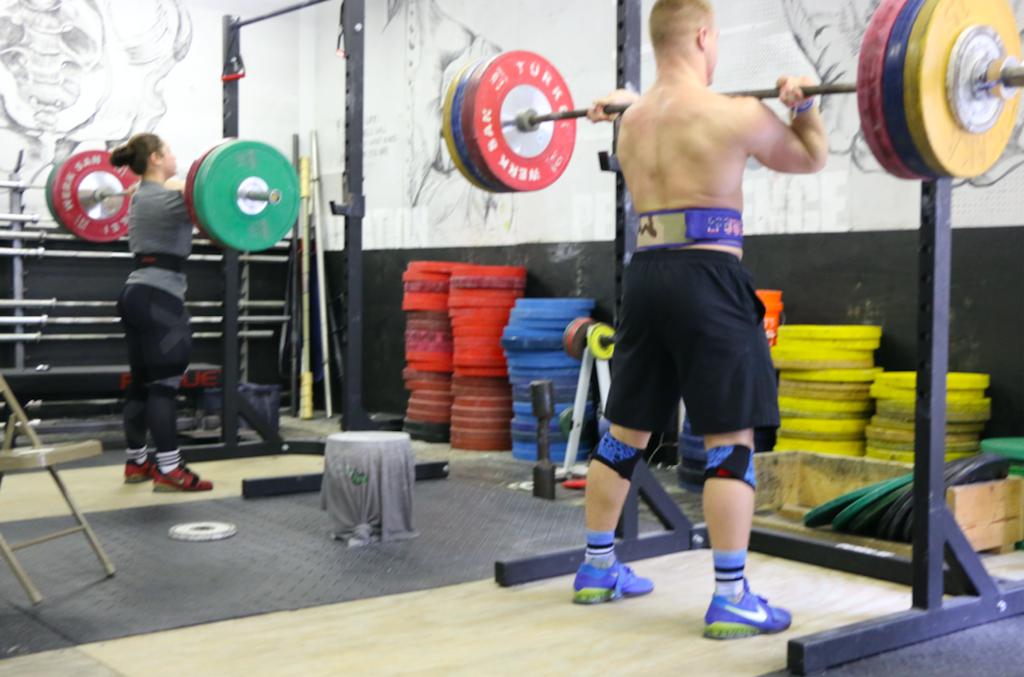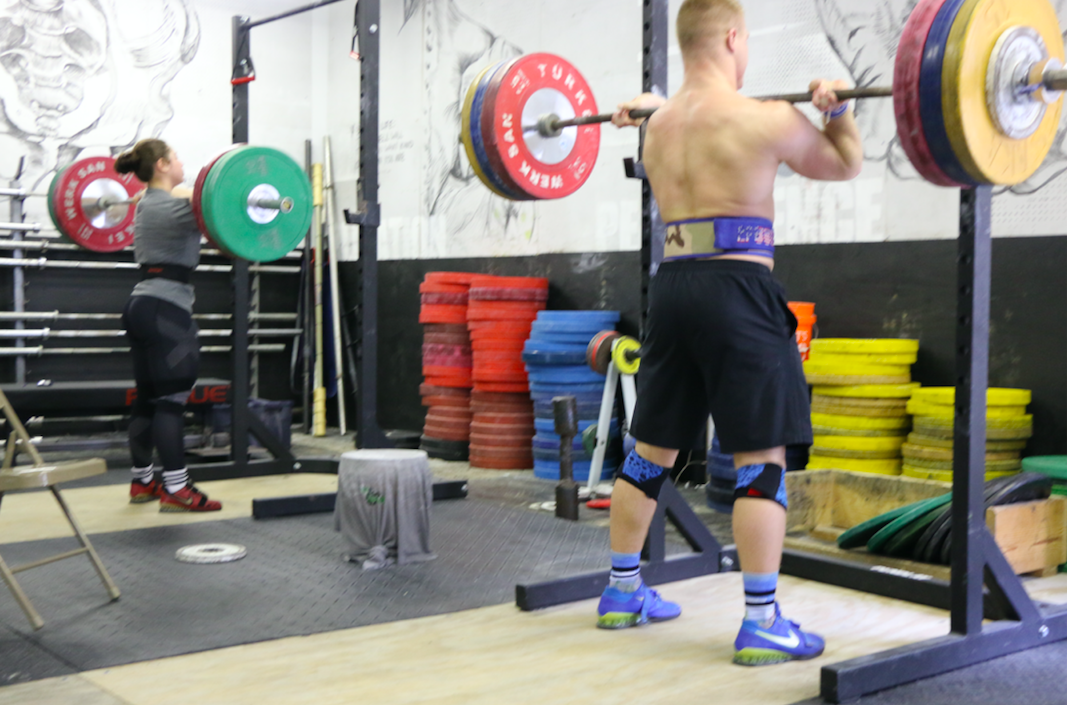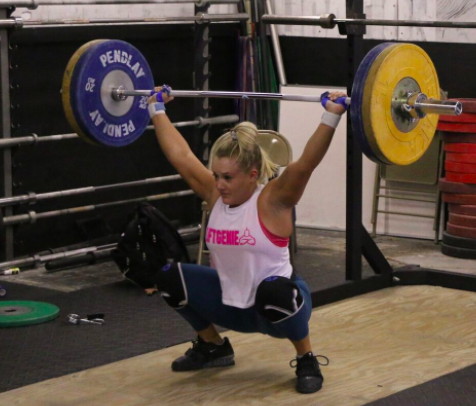I’ve been thinking a lot lately about the Bulgarian Method. Let me keep it real for you: I am really talking about high frequency training more than the real Bulgarian Method. For those that don’t know, the real Bulgarian Method is maxing out in the snatch, clean and jerk, and front squat three-times per day most days and seven days per week.
It’s a popular thing in America to brag about training “Bulgarian.” Most spouting off about training Bulgarian are training once per day, maxing out in the snatch or clean and jerk, and squatting some days. They are using the word ‘Bulgarian’ to hide the fact that they are just lazy. They aren’t willing to put in the work required to get good at their sport. Maxing out in a lift each day isn’t hardcore. All of us enjoy going heavy. That’s not hard work. That’s being immature.
The truth is that most drug free athletes couldn’t handle a true Bulgarian System style of training if they wanted to. Even for athletes on drugs, training in this style requires exceptional genetics and perfect conditions. In America, most athletes are in school and/or have a job, so they can’t train whenever they want. Obviously, these aren’t perfect circumstances.
This article is going to refer to all high frequency training like powerlifting, strongman, or any strength training regimen. The new craze around the world is ultimate high frequency. For some it’s a good idea, and for some it’s probably not.
Obviously, I am not against high frequency training, since I wrote the eBooks “Squat Every Day” and “Squat Every Day 2”. Well thought out training higher in frequency can work well for two reasons:
- Performing repetitions with loads at 90% and above is the easiest way to get stronger. (Prilepin, 1974)
- Higher frequency creates better efficiency. Obviously the more you do something, the better you become at that activity!
[thrive_leads id=’9631′]
Here’s my concern about high frequency training. This is just an observation, but it’s obvious that high frequency training gets people strong quickly. However, I’ve noticed that a lot of people I am friends with get injured more frequently after going high frequency for longer periods of time. It happened to me.
I performed the workout in my book “Squat Every Day” for six months, and my numbers shot through the roof especially for a 40-year old man. However, shortly after I hit that six-month period, my joints started breaking down. So the first thing that I am going to say is consider running higher frequency programs in shorter blocks, like 6-8 weeks.
This article is about some ideas for performing higher frequency programs in a safer and more efficient way. If one were to use velocity tools to measure and track average mean velocities, they could avoid a lot of pitfalls sometimes related to high frequency training. Potentially, you could then get all the benefits while avoiding some of the negative side effects.
Here’s the deal. On a daily basis, one’s 1RM can vary 15% up or down. That’s a 30% swing, and that’s what makes things hard. Some days when you come in the gym, you aren’t going to hit anywhere near your personal record. However, most athletes will come in the gym and try attempt after attempt with a weight that simply isn’t happening that day.
Some would say that those misses are still good training (normally a young male with more testosterone than brains). That’s wrong. When you attempt a 93% weight five times without a make, you end up doing two things:
- Teaching your body to miss causing you to become an inconsistent athlete.
- Beating up your joints, which over time compounds.
Here’s my recommendation. Use a velocity tool to measure your 80% lift each day. It doesn’t matter which lift. You simply need to know that average speed. Once you’ve established that average, you can make daily decisions that are more conducive to your training.
Here’s the way it could work:
If you are 10% or more below your average velocity, then I recommend a lower intensity day with a focus on movement and volume. Here’s a couple of examples:
- If an Olympic lift, work up to 85-88% for an EMOM of 6-8 singles.
- If a powerlift, stay at around 80-85% for 3×3.
If you are right on the average velocity, you could work up to 93-95% for 2×1.
If you are above the average velocity, you could swing for the fences ‘cause today is your day.
[thrive_leads id=’9474′]
Man, I can’t tell you how much I wish I had used this system my whole life. I probably wouldn’t have a bad hip if I had used this system. A lot of athletes could have avoided injuries, used the proper daily focus matching their capabilities, and improved at a much quicker rate.
There’s something else that I haven’t mentioned. It’s really the elephant in the room. It’s the fact that this sport of ours can drive one crazy. I’m mainly referring to Olympic weightlifting right now due to the difficulty of the movement. I watched this sport break many great athletes. These are athletes most of you will never hear about because the sport drove them away before they could realize their potential.
The problem is that athletes can’t be honest with themselves. I’m talking about me right now as much as I am talking about other athletes. When your daily stress is greater than your ability to recover, your body will start to breakdown. When this occurs, your body isn’t going to perform at an optimal level. You can push as hard as you want, but your body isn’t going to cooperate. I’ve watched one bad day ruin an athlete.
Great athletes are obsessed with the becoming the best. Unfortunately, this becomes their identity. I am not going to get into the psychology of this right now, but it can drive you crazy. One bad day can leave them thinking they have all of a sudden become weak. Their manic behavior can’t think logically.
[thrive_leads id=’8207′]
I want to leave you all with this: strength sports aren’t linear, there are ups and downs. The body breaks down, and the body repairs. This up and down is the exact way we get better. We beat the body up, and then it repairs stronger than ever. Obviously when it is beat to a pulp, you aren’t going to have a good day.
I want you all to love whatever strength sport you choose. If you can’t think logically on your own, then use velocity based training to keep you honest. Your very soul will thank me, and you will avoid a lot of tears that can come with this sport. If you can avoid those tears or at least survive them, you will find that there is a lot of joy in weightlifting and powerlifting. You simply have to embrace the process.



Thanks for your thoughts Coach.